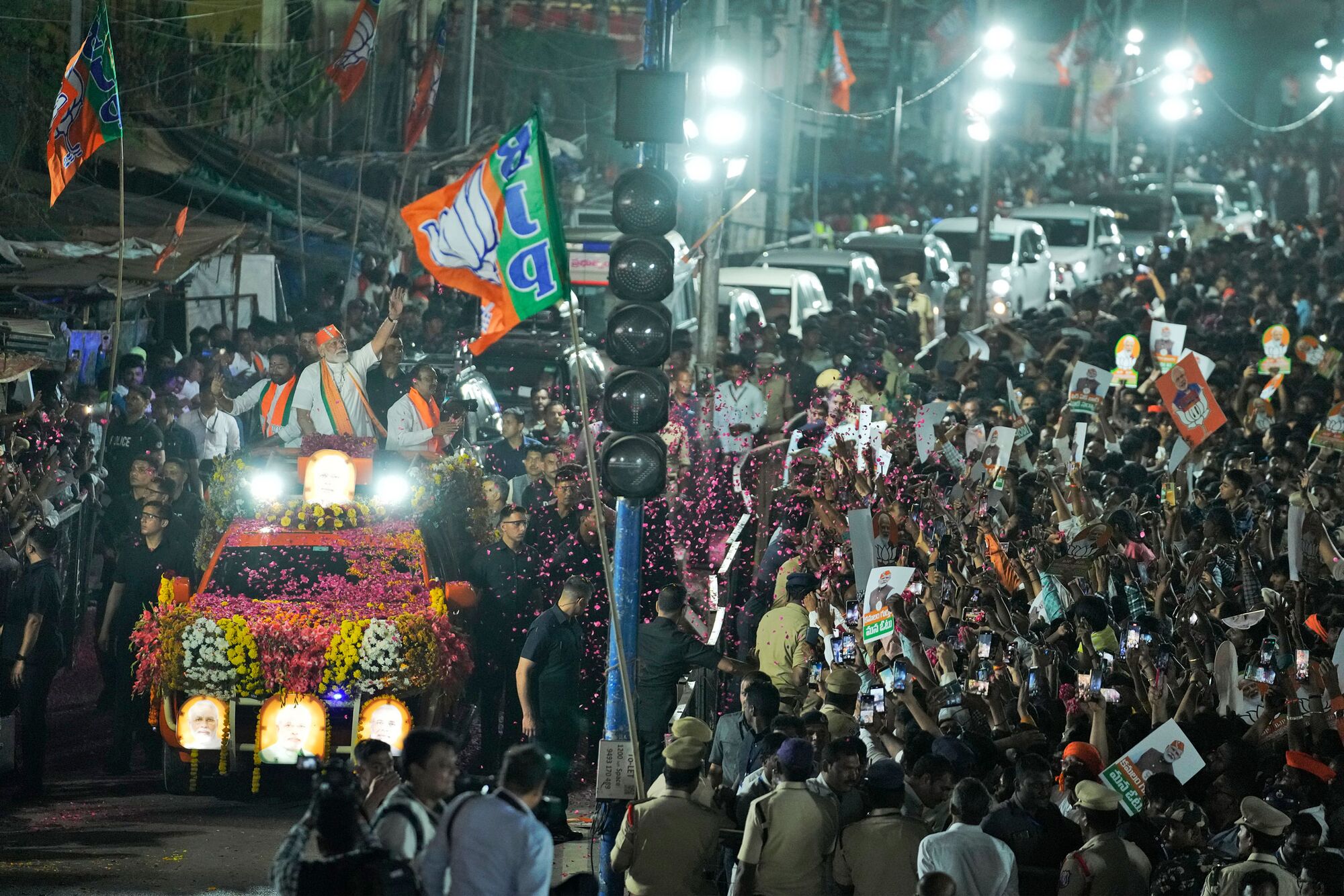
Voting in India’s six-week election commenced on Friday, with Prime Minister Narendra Modi of the Hindu nationalist party expected to secure a clear victory.
As India is a democracy, every eligible voter in the country’s 28 states and eight union territories will have the opportunity to exercise their right to vote.
The election is being documented as the biggest democratic exercise ever.
India, the most populous country in the world, embarks on an extensive electoral process spanning over a month and a half, necessitating meticulous logistical planning.
While voting is completed in a single day in the smallest states and territories administered by the federal government, larger states witness voting spread over two or four days.
In states with very large populations like West Bengal, Uttar Pradesh, and Bihar, voting occurs across all seven phases.
The electoral process commenced on Friday with the first phase of voting, wherein 102 of the 543 constituencies of India’s lower house of Parliament, the Lok Sabha, are decided. These elections determine the allocation of all 543 seats.
India is composed of 36 states and federally governed territories, each with its own unique voting dynamics and considerations.
-Who are the voters?
India’s electorate is vast, with approximately 968 million people set to exercise their right to vote in the upcoming election—six times larger than the voting population of the upcoming United States election.
This historic democratic process will determine the fate of 543 politicians who will be elected to the Lok Sabha, with two additional members nominated, bringing the total strength of the house to 545.
To facilitate this massive undertaking, there are 1.5 million polling booths and five million electronic voting machines deployed across the country.
Gender-wise, the voter demographic is balanced, with 497 million male voters comprising over 51% of the total, while female voters number at 471 million, reflecting a steady increase over the years.
Additionally, India sees significant participation from its youth, with 18 million first-time voters in the 18–19 age group and 197.4 million in the 20–29 age group.
According to surveys reported by Forbes, unemployment ranks among the primary concerns of Indian youth.
The 2019 general election witnessed a record-breaking turnout, with 67% of the 945 million eligible voters casting their ballots, totaling nearly 615 million voters.
Given the scale of this democratic exercise, India’s expenditure on elections is substantial, with over $8 billion reportedly spent in 2019, and an even larger expenditure anticipated this time
The election commission in India has made the statement “every voter counts” more than just a catchphrase.
Helicopters, boats, horses, elephants, and mules are all used by officials to reach the most inaccessible areas.
To ensure that a 39-year-old woman from the northeastern state of Arunachal Pradesh could cast her ballot in the 2019 general election, five poll officials endured two days of bus and foot travel.
India’s voter turnout is quite impressive when compared to that of many advanced democracies.
Experts suggest that a significant increase in voter participation is often seen as a sign of confidence in the political process and a yearning for a change in government.
Research conducted in India and the United States has also found a correlation between high voter turnout and sentiment against the current ruling party, the BBC reports.
There were over eight thousand contenders for the 2019 election. A total of over 2,700 political parties will vie for representation in the Lok Sabha this year.
This election holds significant importance for Prime Minister Narendra Modi. He and his Bharatiya Janata Party are seeking a third consecutive five-year term in power.
If he is elected as PM again, he will match the record of Jawaharlal Nehru, India’s inaugural prime minister.
As reported by the BBC, over the past decade of Modi’s leadership, India’s economy has made a remarkable transformation.
It has moved from being categorised as part of the “fragile five” to now being recognised as one of the top five economies in the world.
The country’s economy is surpassing that of many other nations.
The government is investing $100bn annually to revamp the deteriorating infrastructure, focusing on road, rail, and port construction.
Companies like Apple and Tesla are considering the country as a potential alternative to China, as part of their global diversification strategy.
Heir to a political dynasty Rahul Gandhi is widely recognised as the prominent figure of the Congress party and the face of the opposition.
The Congress party has historically held significant influence in Indian politics. Despite belonging to India’s most prominent political family, he has yet to secure a victory in a national election for his party.
Among the key figures shaping India’s political landscape is Arvind Kejriwal, the charismatic leader of the Aam Aadmi Party and Delhi’s chief minister.
Amit Shah, India’s home minister, is widely recognised for his exceptional political acumen and strategic prowess.
He is not only a trusted confidant of Modi but also renowned for his efficiency in navigating the political landscape.
With a population of more than 1.4 billion, the South Asian nation’s approximately 970 million eligible voters have been reported as impressive.
The electoral process will continue with subsequent voting days scheduled for April 26, May 7, May 13, May 20, May 25, and June 1 following this initial phase.
On June 4, the culmination of this monumental democratic exercise will be marked by the counting of votes, with results anticipated to be announced simultaneously.
As the nation awaits the outcome, the significance of this historic event reverberates both within India and across the globe.





